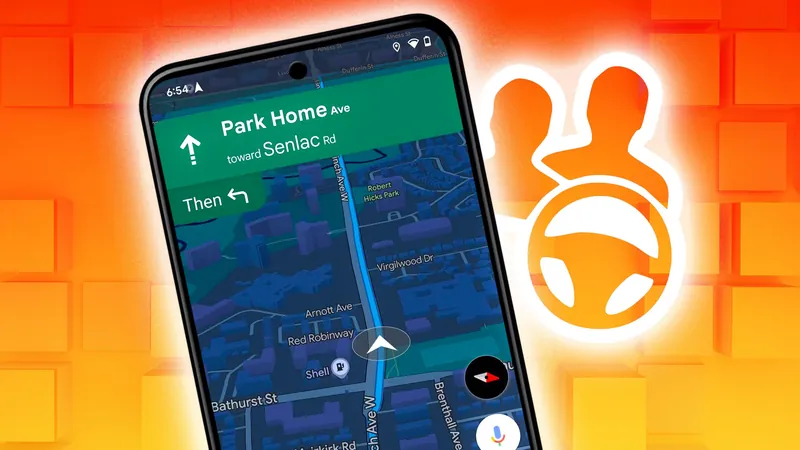
Why Google Maps Desperately Needs a Co-Driving Mode: Here's What You Need to Know!
2024-12-28
Author: Wei
The Case for a Co-Driving Mode
Ever tried coordinating multiple cars on a single road trip? It can quickly turn into a logistical nightmare. Currently, Google Maps shines when you’re solo, effortlessly guiding you to your destination. However, the challenges multiply when you travel with friends or family in separate vehicles.
When navigating together, many find themselves fumbling with third-party applications like WhatsApp or Telegram just to share their locations and coordinate stops. This approach is far from ideal, especially for the driver whose attention should be on the road, not fiddling with their phone.
Envisioning a Co-Driving Feature
Now imagine a revolutionary co-driving mode that allows multiple drivers or passengers traveling to the same destination to see each other’s live locations on their Google Maps interface. If you and your friend are driving separately to the same location, you could track each other’s vehicles in real time, making planning stops and keeping each other accountable a breeze.
This tool could also be useful in emergencies. Picture this: you’re driving in a convoy, and suddenly one of the cars comes to an unexpected halt. With a co-driving mode, you'd instantly see that the other vehicle has stopped, allowing for immediate response without the need for a distracting phone call or text.
How It Could Work
Implementing this feature wouldn’t be overly complicated. Users could create a “co-driving group” in Google Maps, inviting other participants to join. Once established, everyone in the group would see live icons representing each car along their shared route. The app could provide alerts if someone strays off course, suggest optimal meeting points, or even offer a way to adjust routes on the fly to regroup.
Why This Feature is Long Overdue
One must wonder why Google hasn't yet rolled out this essential feature. While the current live location-sharing capabilities exist, they lack integration with active navigation. Concerns about user privacy could be at the forefront, but these challenges can certainly be tackled with appropriate settings that allow users to control their information sharing.
Interestingly, Google once had a similar concept operating within Waze: the now-defunct Waze Carpool, which connected drivers and riders headed in the same direction. This history demonstrates that the technology exists; it just hasn’t been leveraged in Google Maps where it would benefit a much broader audience.
A Call to Action for Google
As road trips and group commutes become ever more popular, it’s time for Google Maps to step up and officially add a co-driving mode. Users are clamoring for this feature, which could revolutionize the way we navigate together. Google, don’t let this opportunity pass by—your users deserve better!
The question now is, how long must we wait? Are you listening, Google? Your road-tripping fans are counting on you!




 Brasil (PT)
Brasil (PT)
 Canada (EN)
Canada (EN)
 Chile (ES)
Chile (ES)
 Česko (CS)
Česko (CS)
 대한민국 (KO)
대한민국 (KO)
 España (ES)
España (ES)
 France (FR)
France (FR)
 Hong Kong (EN)
Hong Kong (EN)
 Italia (IT)
Italia (IT)
 日本 (JA)
日本 (JA)
 Magyarország (HU)
Magyarország (HU)
 Norge (NO)
Norge (NO)
 Polska (PL)
Polska (PL)
 Schweiz (DE)
Schweiz (DE)
 Singapore (EN)
Singapore (EN)
 Sverige (SV)
Sverige (SV)
 Suomi (FI)
Suomi (FI)
 Türkiye (TR)
Türkiye (TR)
 الإمارات العربية المتحدة (AR)
الإمارات العربية المتحدة (AR)